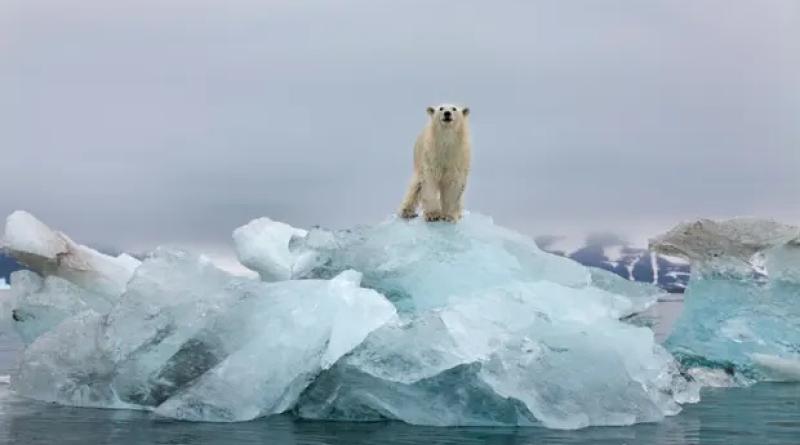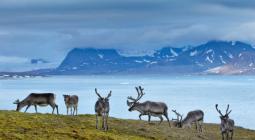Alarming levels of PFAS in Norwegian Arctic ice pose new risk to wildlife

Norwegian Arctic ice is contaminated with alarming levels of toxic PFAS, and the chemicals may represent a major environmental stressor to the region’s wildlife, new research finds.
The Oxford University-led study’s measurements of ice around Svalbard, Norway, detected 26 types of PFAS compounds, and found when ice melts, the chemicals can move from glaciers into downstream ecosystems like Arctic fjords and tundra.
The meltwater can contain a cocktail of contaminants that includes PFAS and affects the entire food web, including plankton, fish, seal and apex animals like polar bears, which have previously been found to have high PFAS levels in their blood.
“There’s a washout of contaminants that occurs seasonally … and some PFAS seem to be mobile during melts, which could be important to ecosystems downstream,” said Dr William Hartz, a lead author on the study who noted a “doubling up effect” on animals as climate changes and ice melts. The climate has been warming faster in Svalbard than the world’s average.
“As a polar bear, you have exposure to toxic manmade chemicals, and stresses from a changing habitat,” he added.
PFAS are a class of about 12,000 chemicals often used to make thousands of consumer products resist water, stains and heat. They are called “forever chemicals” because they do not naturally break down, and they are linked to cancer, liver disease, kidney stress, fetal complications and other serious health problems.
Among PFAS compounds researchers found in ice at levels above US advisory drinking water limits were PFOS and PFOA, which are considered to be two of the most dangerous.
The study also found particularly high levels of TFA, a refrigeration byproduct. During the Montreal Protocol in 1987, many nations agreed to phase out chlorofluorocarbons, or CFCs, a potent greenhouse gas used for refrigeration. Those were ultimately replaced with hydrofluoro-olefin, or HFOs.
Once in the environment, HFOs, which are also a greenhouse gas, can turn into TFA, and TFA levels are increasing in the Arctic, the study and results from previous measurements have found. TFA and other PFAS compounds are highly mobile and can move through the atmosphere to be deposited in the Arctic or elsewhere around the world.
Though TFA is thought to be less toxic than many other PFAS, the chemical has not been thoroughly studied, so no one knows what damage the compounds may be doing.
“Limited knowledge about the safe levels of TFA in the environment needs addressing,” the authors stated.
… as 2023 gathers pace, and you’re joining us from Greece, we have a small favour to ask. A new year means new opportunities, and we're hoping this year gives rise to some much-needed stability and progress. Whatever happens, the Guardian will be there, providing clarity and fearless, independent reporting from around the world, 24/7.
Times are tough, and we know not everyone is in a position to pay for news. But as we’re reader-funded, we rely on the ongoing generosity of those who can afford it. This vital support means millions can continue to read reliable reporting on the events shaping our world. Will you invest in the Guardian this year?
Unlike many others, we have no billionaire owner, meaning we can fearlessly chase the truth and report it with integrity. 2023 will be no different; we will work with trademark determination and passion to bring you journalism that’s always free from commercial or political interference. No one edits our editor or diverts our attention from what’s most important.
With your support, we’ll continue to keep Guardian journalism open and free for everyone to read. When access to information is made equal, greater numbers of people can understand global events and their impact on people and communities. Together, we can demand better from the powerful and fight for democracy.
Whether you give a little or a lot, your funding is vital in powering our reporting for years to come.
cover photo:A polar bear in Svalbard, Norway. ‘As a polar bear, you have exposure to toxic man made chemicals, and stresses from a changing habitat.’ Photograph: Paul Souders/Getty Images




